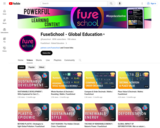
Description of blood through the heart
- Subject:
- Math
- Material Type:
- Activity/Lab
- Provider:
- Khan Academy
- Date Added:
- 10/10/2018

Description of blood through the heart

This is a resource for students to complete when doing a frog dissection.
You could dissect frogs in real life or use a virtual frog dissection for all the learning without the mess!

Developed for second grade. Students will use their senses (with the exception of taste), to make observations in order to compare two different animals: a frog and a hamster. Classification is also touched upon slightly.Biology In Elementary Schools is a Saint Michael's College student project. The teaching ideas on this page have been found, refined, and developed by students in a college-level course on the teaching of biology at the elementary level. Unless otherwise noted, the lesson plans have been tried at least once by students from our partner schools. This wiki has been established to share ideas about teaching biology in elementary schools. The motivation behind the creation of this page is twofold: 1. to provide an outlet for the teaching ideas of a group of college educators participating in a workshop-style course; 2. to provide a space where anyone else interested in this topic can place their ideas.

Death is what fungi are all about. By feasting on the deceased remains of almost all organisms on the planet, converting the organic matter back into soil from which new life will spring, they perform perhaps the most vital function in the global food web. Fungi, which thrive on death, make all life possible.

Amazing videos to learn most anything related to math or science (and a bit of soc). Select Playlists from the top menu to see videos grouped by topic.

Individually research a genetic disorder or issue in our society. You will be presenting these to the class.

Foundational Learning Objective 3.2 (discussing examples of current uses of DNA in agriculture and pharmaceutical industries)
Foundational Learning Objective 2.9 (Discuss several human genetic disorders)
Foundational Learning Objective 3.3 (discuss the techniques of genetic screening).

Ideas and Content, Organization, Presentation

Student teams learn about engineering design of green fluorescent proteins (GFPs) and their use in medical research, including stem cell research. They simulate the use of GFPs by adding fluorescent dye to water and letting a flower or plant to transport the dye throughout its structure. Students apply their knowledge of GFPs to engineering applications in the medical, environmental and space exploration fields. Due to the fluorescing nature of the dye, plant life of any color, light or dark, can be used unlike dyes that can only be seen in visible light.

Hank fills us in on the endocrine system - the system of glands which produce and secrete different types of hormones directly into the bloodstream to regulate the body's growth, metabolism, and sexual development & function.

Developed for third grade. In this experiment, students will learn all about soundwaves. Using different techniques and objects, students investigate how different sounds are made from different objects, and how the soundwaves for each are different from one another.Biology In Elementary Schools is a Saint Michael's College student project. The teaching ideas on this page have been found, refined, and developed by students in a college-level course on the teaching of biology at the elementary level. Unless otherwise noted, the lesson plans have been tried at least once by students from our partner schools. This wiki has been established to share ideas about teaching biology in elementary schools. The motivation behind the creation of this page is twofold: 1. to provide an outlet for the teaching ideas of a group of college educators participating in a workshop-style course; 2. to provide a space where anyone else interested in this topic can place their ideas.

Hank and his brother John discuss heredity via the gross example of relative ear wax moistness.

With a solid understanding of biology on the small scale under our belts, it's time for the long view - for the next twelve weeks, we'll be learning how the living things that we've studied interact with and influence each other and their environments. Life is powerful, and in order to understand how living systems work, you first have to understand how they originated, developed and diversified over the past 4.5 billion years of Earth's history. Hang on to your hats as Hank tells us the epic drama that is the history of life on Earth.

This video lesson is on the details of cancer cell growth. How do cancer cells grow? How does chemotherapy fight cancer (and cause negative side effects)? The answers lie in cell division. George Zaidan explains how rapid cell division is cancer壽猻 "strength" -- and also its weakness.

Developed for third grade. This lesson begins by exploring the concepts of density and buoyancy with an introductory "sink or float" activity. In this activity students will be asked to predict whether they think each of a group of small objects will sink or float. The objects we used for this activity are on the materials list. This gets students interested and asking the question "why do some objects sink, and others float?" Students will be asked to think about this question before being given an explanation.This introduction is followed by an experiment. The experiment is a great example of instant gratification science! In this activity students will form a hypothesis about how many teaspoons of salt it will take to float an egg in one cup of water. The hypothesis is then tested and the results are analyzed. Be sure to tell students that it does not matter whether their hypothesis is rejected; all science is successful because knowledge is gained from a hypothesis that is rejected or supported.The emphasis of this lesson is on formulating and testing of a hypothesis.Biology In Elementary Schools is a Saint Michael's College student project. The teaching ideas on this page have been found, refined, and developed by students in a college-level course on the teaching of biology at the elementary level. Unless otherwise noted, the lesson plans have been tried at least once by students from our partner schools. This wiki has been established to share ideas about teaching biology in elementary schools. The motivation behind the creation of this page is twofold: 1. to provide an outlet for the teaching ideas of a group of college educators participating in a workshop-style course; 2. to provide a space where anyone else interested in this topic can place their ideas.

If being alive on Earth were a contest, humans would win it hands down. We're like the Michael Phelps of being alive, but with 250,000 times more gold medals. Today Hank is here to tell us the specifics of why and how human population growth has happened over the past hundred and fifty years or so, and how those specifics relate to ecology.

Hank introduces us to biogeochemical cycles by describing his two favorites: carbon and water. The hydrologic cycle describes how water moves on, above, and below the surface of the Earth, driven by energy supplied by the sun and wind. The carbon cycle does the same... for carbon!

Developed for first grade. Students will make ice cream from scratch while focusing on the Food Guide Pyramid and what constitutes healthy and unhealthy food choices. Also, in doing this experiment states of matter - solids, liquids, and gases will be covered. While making the ice cream, you can ask the students what they expect to happen. Do they expect the ice cream to turn into a solid? Does it begin as a liquid?Biology In Elementary Schools is a Saint Michael's College student project. The teaching ideas on this page have been found, refined, and developed by students in a college-level course on the teaching of biology at the elementary level. Unless otherwise noted, the lesson plans have been tried at least once by students from our partner schools. This wiki has been established to share ideas about teaching biology in elementary schools. The motivation behind the creation of this page is twofold: 1. to provide an outlet for the teaching ideas of a group of college educators participating in a workshop-style course; 2. to provide a space where anyone else interested in this topic can place their ideas.

Hank describes how cells regulate their contents and communicate with one another via mechanisms within the cell membrane.

Developed for the second grade. Learning intention: Students will notice certain things that make each of them unique. They will notice traits including eye color, hair color, earlobes, hair line/shape, tongue rolling, and handedness.Biology In Elementary Schools is a Saint Michael's College student project. The teaching ideas on this page have been found, refined, and developed by students in a college-level course on the teaching of biology at the elementary level. Unless otherwise noted, the lesson plans have been tried at least once by students from our partner schools. This wiki has been established to share ideas about teaching biology in elementary schools. The motivation behind the creation of this page is twofold: 1. to provide an outlet for the teaching ideas of a group of college educators participating in a workshop-style course; 2. to provide a space where anyone else interested in this topic can place their ideas.